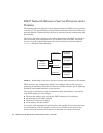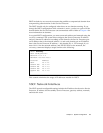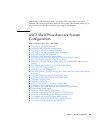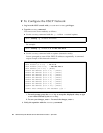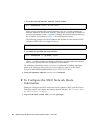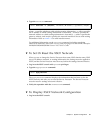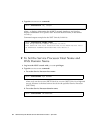
Chapter 3 System Configuration 25
■ Power status
■ Environmental status
The Service Processor SNMP agent can supply system information and fault event
information using public MIBs. SNMP managers, for example, a third-party
manager application, use any Service Processor network interface with the SNMP
agent port to communicate with the agent. The SNMP agent supports concurrent
access from multiple users through SNMP managers.
By default, the SNMP agent uses version 3 (v3) of the SNMP protocol. SNMP v3 is
secure, requiring an authentication protocol, authentication password, and
encryption password. The valid authentication protocols are MD5 and SHA (secure
hash algorithm). You can also configure your server to accept earlier SNMP versions
1 and 2.
The SNMP agent includes the v3 utilities for user management, the User Security
Model (USM), and for view access control, the View Access Control Model (VACM).
You can change the configuration of SNMP agent traps, USM user accounts, and
VACM information.
Initial SNMP v3 configuration includes:
1. Creating USM user information
2. Creating VACM access control information (group, view, and access)
Using VACM requires a basic knowledge of SNMP and MIBs. Refer to the Solaris
System Management Agent Administration Guide and to the SPARC Enterprise
M4000/M5000/M8000/M9000 Servers XSCF User’s Guide for information.
3. Configuring the SNMP agent
4. Enabling the SNMP agent
5. Setting up your SNMP manager application to communicate with the Service
Processor SNMP agent based on the configuration you used for the agent, namely,
user, port, and trap information.
The SNMP agent is active only on the active Service Processor. In the event of
failover, the SNMP agent is restarted on the newly active Service Processor.
Additional Services
This section describes HTTPS, Telnet, SMTP, and SSH services, and altitude settings.




